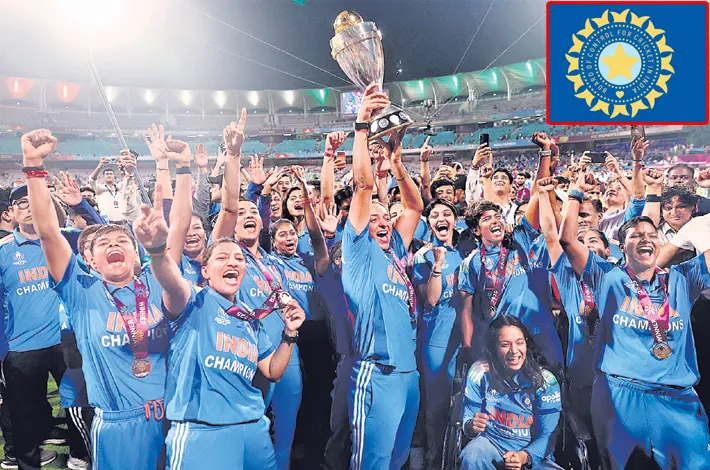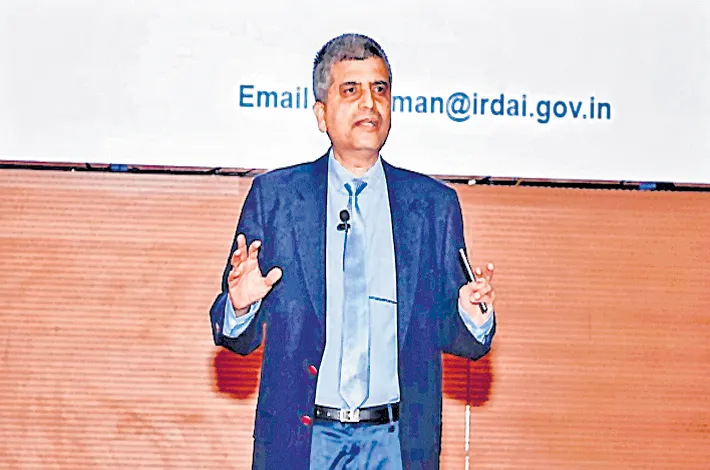Indian women come of age
04-11-2025 12:00:00 AM

The 1980s and 1990s saw gradual internationalization, with India co-hosting the 1997 World Cup, though a semi-final exit to Australia gave rise to early optimism. Absent from the 1988 edition due to logistical hurdles, the team rebuilt steadily
Who said what…
- Mahendra Kumar Sharma (WCAI Founder, 1973): "This is the start of something big; women deserve their own arena in cricket, not just spectatorship." (On inaugural Inter-State Nationals with 3 teams)
- Shantha Rangaswamy (First Test Captain, 1976; 2025 HT Interview): "From travelling in unreserved coaches to sleeping in dormitories on the floor… we had to carry our own bedding. There was no money, no sponsors… But there were women of steel who believed the show must go on."
- Diana Edulji (Arjuna Awardee, 1985; 2010s Retrospective): "In the late '90s, very few people knew about women’s cricket. We played on subpar pitches, shared kits… Cricket doesn't see gender; it's about skill and heart."
- Mithali raj: "As a cricketer and captain, the lowest has been the 2013 World Cup… It was a big platform to showcase women's cricket, but we couldn't qualify. That heartbreak fueled our resolve."
“This is the 1983 moment for us,” said former India captain Diana Edulji. What the Kapil’s devils did for Indian cricket, Harmandi’s team would in all probability do the trick that is to take the game of cricket to the next level. India finally broke the jinx by beating South Africa by 52 runs to lift the ICC trophy.
The win is special in so many ways. For one, the mix of players that comprise the team is phenomenal who come from small towns and villages across the country. Sree Charani comes from a small village Erramalle in Andhra Pradesh. Chetri hails from a remote village Bhokakat in Assam. The pacer Kranti Gaud is from Ghuwara in Bhundelkhand, Richa Ghosh, the hard hitting batswomen and wicket keeper is from Siliguri, the inswing bowler Renuka Singh is from Rohru in Himachal Pradesh and Harleen Deol makes her way from Chandigarh.
Almost everyone knows that Smriti Mandana the mainstay opener is from Sangli and the captain Harmanpreet Kaur rose to fame from Moga, in Punjab. Jemima and Radha Yadav are from Mumbai. This win is a true reflection of inclusivity and the wealth of talent in India.
Incredible stories
Just a week prior to the final, Shafali Verma was not considered but due to an injury to Pratika Rawal, she was included in the last minute and she turned out to become the player of the finals with a swashbuckling knock of 87 and also snapped two wickets.
Jemima Rodrigues, the live wire of the Indian team who was dropped in the league matches scored a magnificent 127 in the semi-finals against the tough Australians showing great amount of grit and gumption.
Amanjot Kaur, daughter of a carpenter was instrumental in the first South African wicket with a brilliant throw to run out the opener and later snatched a catch in the deep to seal the win for India.
Tough journey
The roots of women's cricket in India can be traced back to the British era, when the sport was largely confined to British expatriates and elite Parsi communities in Bombay, with sporadic gender-mixed exhibitions underscoring its male-dominated ethos. True institutionalization arrived in 1973, when Mahendra Kumar Sharma founded the Women's Cricket Association of India (WCAI) in Lucknow, under the presidency of Begum Hamida Habibullah.
The inaugural Inter-State Nationals in Pune that year featured just three teams—Mumbai, Maharashtra, and Uttar Pradesh—but by 1974, participation increased to eight, and soon all states joined, alongside institutional sides like Railways and Air India. Pioneers like Shantha Rangaswamy, who debuted in 1976, navigated extremely tough conditions: unreserved train compartments, dormitory floors for lodging, and self-funded kits carried like backpacks.
The 1980s and 1990s saw gradual internationalization, with India co-hosting the 1997 World Cup, though a semi-final exit to Australia gave rise to early optimism. Absent from the 1988 edition due to logistical hurdles, the team rebuilt steadily, blending grit with emerging talent. A pivotal turning point came in 2006-07, when the WCAI merged with the Board of Control for Cricket in India (BCCI), ushering in professional infrastructure, coaching, and funding previously reserved for the men's game.
This integration, championed by administrators like Shubhangi Kulkarni, who received the Arjuna Award in 1985, elevated standards overnight. Domestic tournaments proliferated—the Women's One Day League, Challenger Trophy, and from 2018, the T20 Challenge—nurturing stars like Mithali Raj, who amassed over 10,000 ODI runs, and Jhulan Goswami, the highest wicket-taker in women's ODIs with 255 dismissals. The 2013 launch of the Women's IPL precursor and the full-fledged Women's Premier League (WPL) in 2023 exploded visibility, drawing massive crowds and endorsements. Under coaches from Sudha Shah's disciplined era to Amol Muzumdar's empathetic guidance since 2023, the team evolved into a balanced unit, blending aggressive batting with tactical bowling.
Yet, this glory masks challenges that tested the sport's mettle. Early efforts faced with with scant resources: players funded travel and gear, trained on subpar pitches and endured minimal media coverage. Post-merger, disparities persisted—fewer matches meant skills demonstrated less frequently than men's schedules, while infrastructure lagged, with state associations prioritizing male academies. These hurdles built a resilient attitude but underscores the need for sustained investment.
Social attitudes towards women's cricket in India has elements of both progress and prejudice, reflecting broader gender dynamics. Patriarchal norms confined ambitions: parents favored academics over sports for daughters, viewing cricket as "unfeminine" or risky, while societal trolls like "stick to the kitchen" echoed in online vitriol during losses. Yet, viewpoints are evolving, buoyed by trailblazers. Virat Kohli hailed the team's success as a mindset-shifter, crediting WPL's commercial boom for normalizing women's sport.
This victory, then, is more than a trophy; it's a mirror to India's soul, reflecting battles won against invisibility and inequality. As Shantha Rangaswamy reflected, the foundations laid 50 years ago now bear fruit. Challenges persist—deeper infrastructure equity, zero-tolerance for harassment—but optimism reigns. In Harmanpreet's words, "This is just the start." For a billion dreamers, it's a clarion call: the pitch is level, and the Women in Blue are leading the charge.








